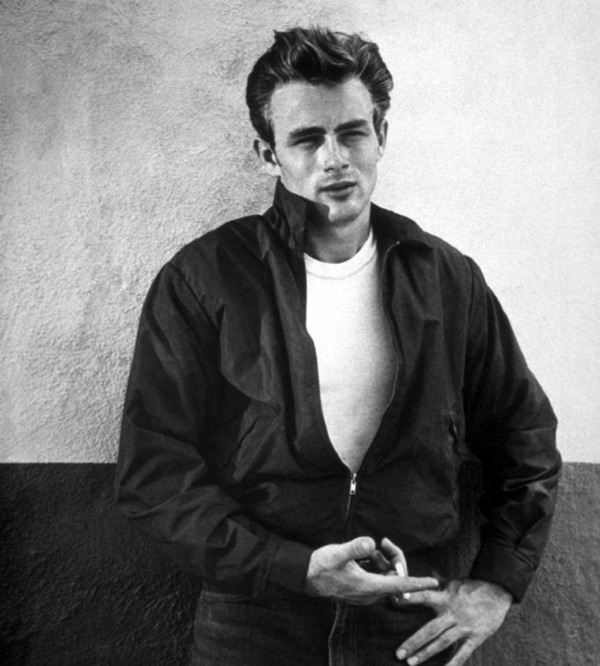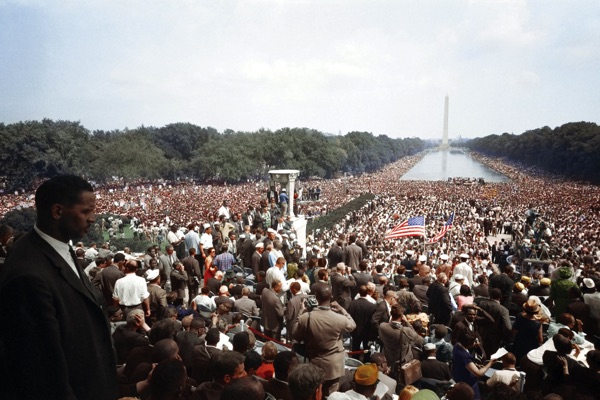Denim World Tour Episode #3: America The - Denim - Denim Première Vision
Blue jeans are a symbol deeply rooted in the history of the United States: the iconic garment expresses cultural identity, evolution and change in an effervescent society. Perhaps more than in any other country, denim represents for the US a true symbol of cultural and social change, which continues to be expressed in the social fabric of today.
Here, the history of American denim is differentiated into three basic themes: the creation of blue jeans, their evolution to present day, and their cultural importance in the US.
The Origin of Blue Jeans
American denim dates back to the 1840s, when cotton twill canvas was dyed indigo, black, and gray. As the gold rush took hold in the mid-19th century, an exponential increase in mine workers created a need for a durable, easy-to-wash, breathable canva. Denim was the perfect fabric: at the time, this strong, durable cotton canvas was already being worn by workers on other continents, where it was popular for its rugged qualities.
The very first pair of jeans was born in 1873, when Levi Strauss, a German immigrant, arrived in California to sell cloth for making curtains and wagon covers. He soon made his first pair of jeans by collaborating with Jacob Davis; together they created highly durable pants for miners, with rivets to reinforce the seams.

Later, companies seized the opportunity to produce the blue canvas, among them Blue Bell (later Wrangler) in 1904 and Lee Mercantile, in 1911. During World War I, Lee Union-Alls jeans were standard for all conscripts.
The increase in textile factories meant that US textile production soon became independent of English textile manufacturing. During this period, one of the most important companies in American history, Cone Mills, was founded. Founded in 1891, Cone Denim is the oldest U.S. denim company still in business, producing 100 million yards of denim per year. Levi’s 501s were the first style made by Cone Mills denim in 1922. One of their best-known fabrics is “White Oak,” which is still woven on vintage American-made shuttle looms on the mill’s original wooden floor.
Style is in the Details
Blue jeans have evolved over time, with changes being strongly linked to usage and American customs.

Initially a work garment, denim changed to better suit conditions in the field. The original design featured four pockets, which later changed to five. Copper rivets were sewn in to reinforce the material at stress points.
Belt loops, on the other hand, first appeared on a pair of Levi’s 501s in 1922, as an alternative to suspender buttons, a feature that reflected a growing interest in wearing belts rather than suspenders.
Over the years, other features have been modified, including the elimination of rivets from the crotch area during World War II, due to metal rationing, and removing the closing strap on the back of the belt that allowed for size adjustment.
During World War II, denim’s hard-wearing characteristics made it an ideal substitute for other fabrics. It was used for a wide variety of attire, from prison garb to Air Force uniforms in the 1940s. At that time, American soldiers profoundly influenced the imagery of blue jeans. Portraits and images of off-duty soldiers clad in denim influenced cultures in other countries across Europe and in Japan, popularizing jeans in a casual context.

As demand for denim returned during the postwar years, Strauss’s competitors, Wrangler and Lee, emerged to tap into the international market.
In the 1950s, denim began to make its way into the fashion world. Influenced by movies and Hollywood stars, music, and popular culture, denim became the symbol of everyday America.
The film Rebel without a Cause was released in 1955: the Hollywood icon James Dean wore jeans with a white T-shirt, an ensemble that remains iconic to this day.
Suddenly, jeans were not only synonymous with freedom and the Wild West, but had also become the emblem of bad boy cool. That rebellious image of nonconformist, casual style become wildly popular overseas as well.
The American designers Calvin Klein and Gloria Vanderbilt were among the first to create designer jeans, which hit the market in the mid-1970s. Their design identity was strong at a time of few innovations in terms of washes. Jeans were raw, washed or stonewashed, and were inspired by classic patterns. Their success allowed designer denim, which up until then had been reserved for the elite, to enter mass culture. Pants, jackets, hats, shirts: total looks focused on giving feminine images a rebellious attitude.
There followed a succession of various styles that shaped the culture of the era, which still reverberates today. One of the strongest, most identifiable examples is the hip-hop style that defined the 1990s. In response to Eighties-era hyper-consumerism and Pop culture, young people adopted the baggy pants style. Looser cuts and subversive reinterpretations were later accentuated by the grunge trend.
With the popularization of denim came high-end realities. Customization, quality, research: upscale brands such as Ralph Lauren and Tommy Hilfiger aimed to capture a rebellious attitude and designed lines that would become iconic benchmarks in American denim. Today, various brands differentiate themselves with a multifaceted offering, with a wide and varied range that is still strongly linked to streetwear culture.
A symbol of American idealism
Denim, which began as clothing for workers, still represents rebellion and iconoclasm in the popular imagination. Its anti-conformist identity became the symbol of the fight for liberation, equal rights, and pushing back against an older generation that is rooted in ideals that no longer corresponded to modern times.

In the mid-1950s, the emerging civil rights movement ushered in more than a decade of sit-ins and protest marches. Jeans were not only the clothing of choice for some activists, but also a symbol of protest.
As social revolution continued to dominate the 1960s, denim-clad rebels adopted jeans to signify changing times. Jeans were a wardrobe staple for protestors during the Vietnam War; they challenged parental and government values, redefined gender roles, and represented the fight for social progress.
People who wore denim did not want to participate in mainstream fashion; they wanted to do the exact opposite by wearing a piece of clothing that symbolized protest and was out of the ordinary.
At a time when there was a great divide between workwear and casual wear, entire generations were inspired to create their own jeans, tying them to ideals and counter-cultural symbolism, as in the hippie movements of the 1970s, the youth movements, or music culture, from rock and roll to hip-hop. Jeans went from “work ” clothing to casual everyday wear.
Although now denim production is not centered in the U.S., many historic brands continue to be influential on the American scene. Today, denim continues to be a symbol of community across cultures, and plays the role of protagonist in a multifaceted and complex context.
